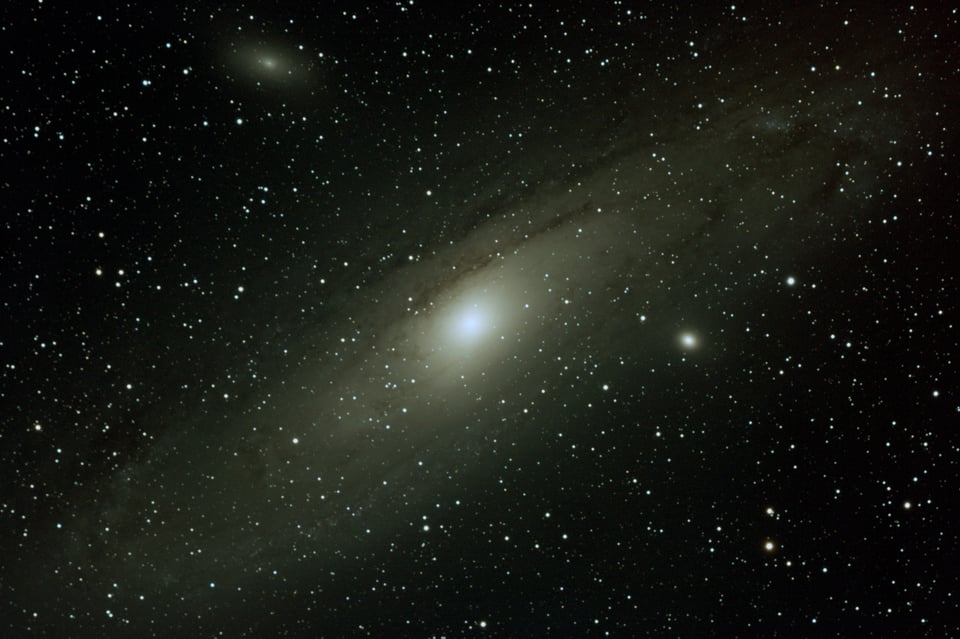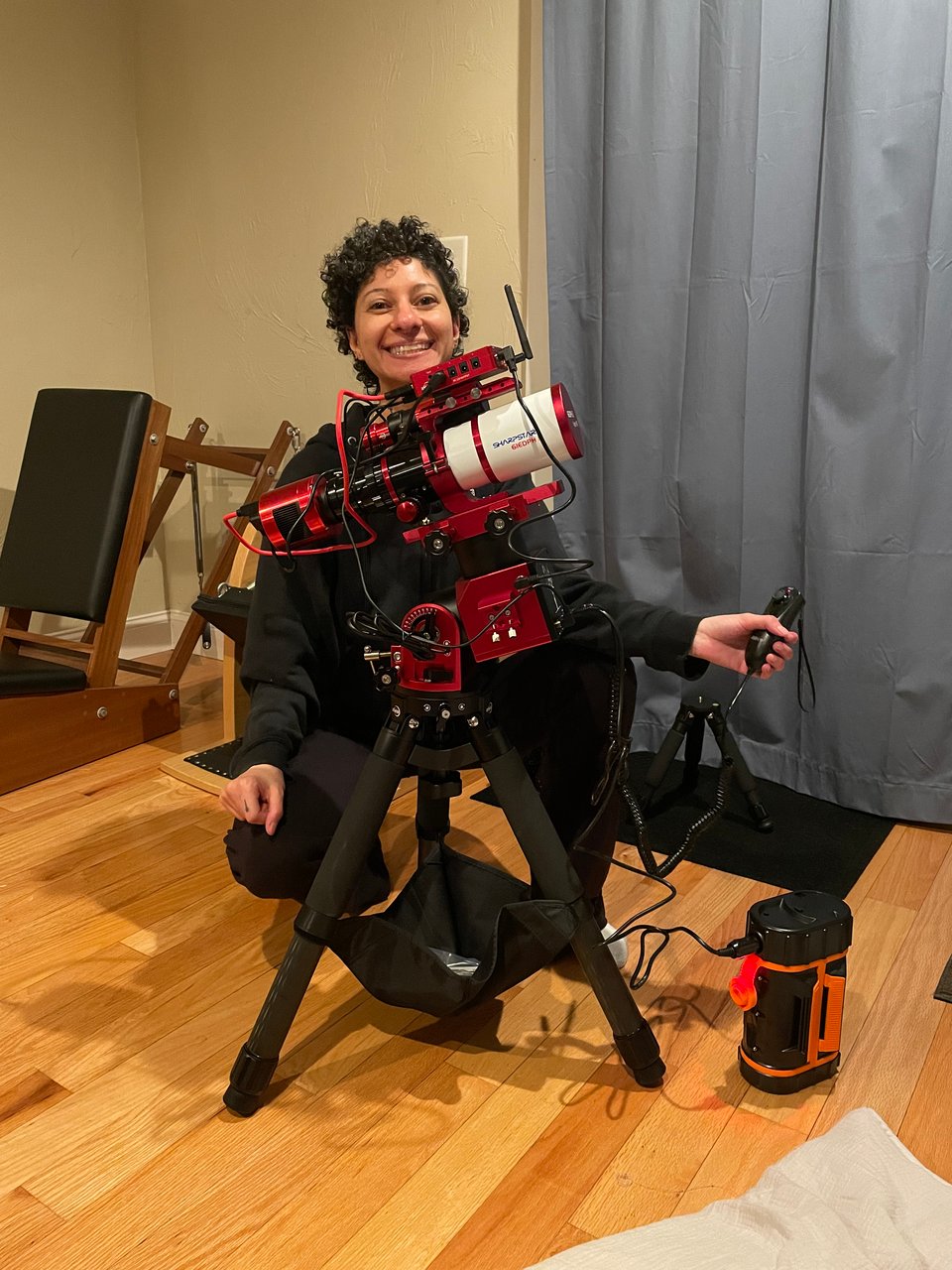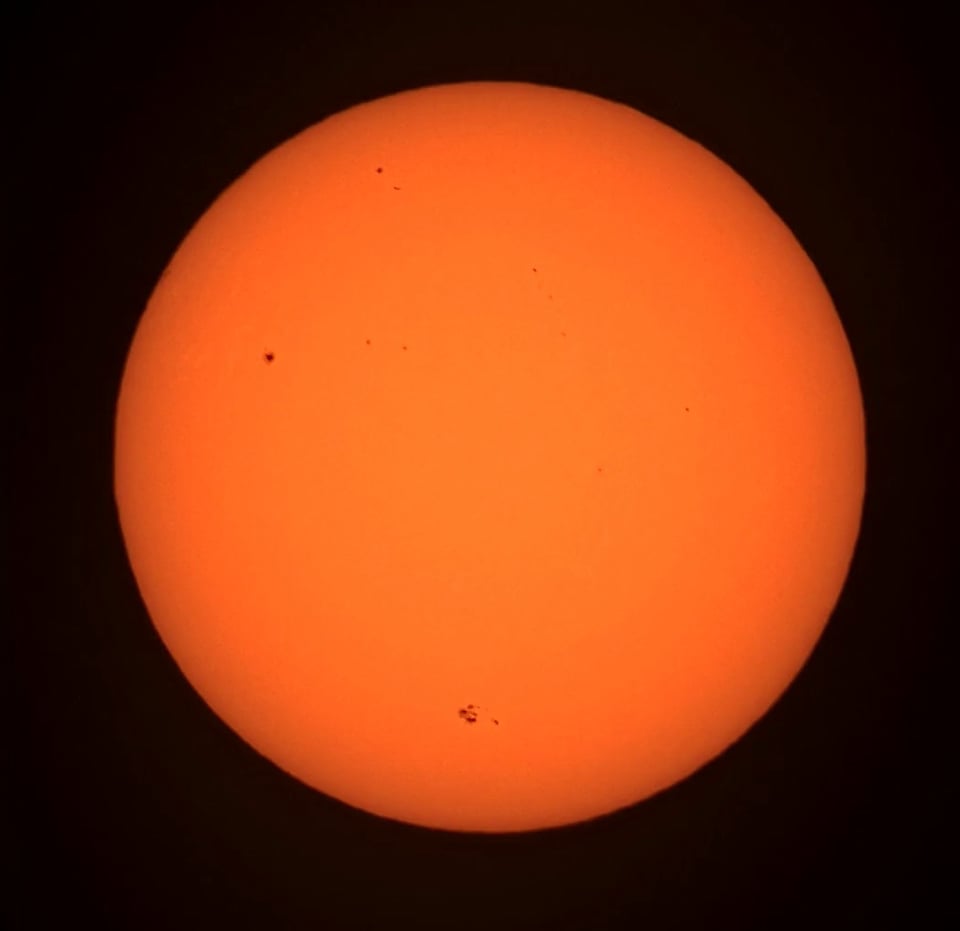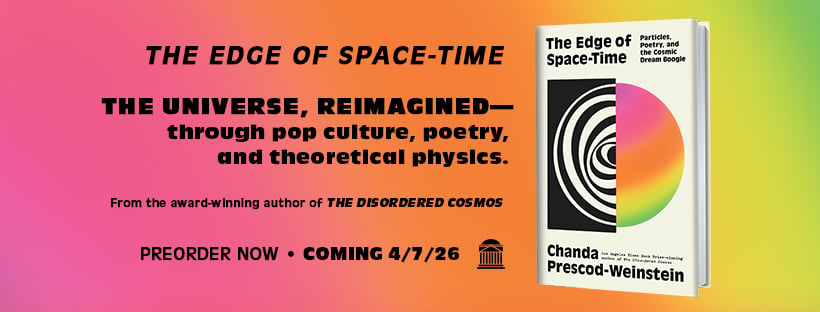It's Andromeda Season!
Now is the time to go outside at night and look at our next door neighbor. It's not creepy!

One of the things that I write about in The Edge of Space-Time (now available for preorder, please preorder!!) is taking up the work of doing astrophotography — not for research but because it would be pretty cool to do and share with the rest of the world. You might think that because I have two degrees in astronomy and astrophysics and a whole ass PhD in cosmology that actually, this is a pretty straight forward thing to do. But I am a theoretical physicist, a pen and paper gal. Which functionally means I don’t really know much about actually working with equipment. To the extent that I do professional work with telescopes, they are very big facilities where other people are doing the instrument-building and data collection. I’m primarily there to talk about interpreting that data.
My entry point to astrophotography was through picking up a little bit of a photography habit. I somehow got the idea that I would try buying a camera and lens that was good for astrophotography and try to capture the Milky Way. I bought the equipment, but didn’t really understand what I was doing. All I knew is that I wanted to be with the night sky.
Luckily a couple of months later, there was a Sky & Telescope article by Alan Dyer that explained how to build a starter astrophotography kit. I read that article so many times that eventually the cover detached from the magazine. I still keep it as a treasure — and also it was quite useful when I was putting my first astrophotography rig together because it had photos, which I used as a kind of guide.

I literally had no idea what I was doing and my two friends who are professional telescope builders I think were both pretty shocked and amused that I had not only pulled it off but gotten so into it.
In many ways, I feel like astrophotography saved me during a difficult time in my life and in the world.
For one, it taught me patience. The thing about astrophotography, especially when you live within reasonable driving distance of the ocean, is that you don’t always get a lot of great viewing nights. And in summer, there are mosquitoes, which I am mildly allergic to. So there’s a lot of waiting, preparing, and then being patient with doing things in the right order, carefully. Also, aligning the equipment for the best possible imaging experience is not always easy, and I’m still learning how to optimize the images using post-processing software. All of this takes time and patience.
Two, it taught me that even with a light polluted sky, you can see some pretty amazing things. First of all, with astrophotography, you’re not taking a snapshot with your eyes. Instead, you use a camera that can capture photons for an extended amount of time. In the shot of Andromeda at the top of this newsletter, each image was 30 seconds of my telescope staring at the sky while the camera collected light. Then it added them all together, making the light signal stronger, creating an image that I could never see with my own two eyes, especially in the light-polluted suburbs.
Three, there’s also the part where you can look at the star closest to us, the sun. In addition to the setup that I bought, I also got a smart telescope to wet my toes. The Seestar S50 is my Baby, and if the United States were serious about education, every public school in the country would have something like it (before Trump’s tariffs, they were under $500).

The Seestar comes with a solar filter, which meant that for the first time, I saw sunspots, not as photos on the internet, but on my phone, generated with my telescope that works basically right out of the box.

Finally and most importantly, there’s something really magical about watching the night sky in the quiet of a cold winter night. It’s an extremely peaceful experience at a time when it’s hard to create moments of peace. Usually I do most of my observing from the warmth of my living room with a laptop, but there’s plenty of time spent getting things setup, calibrating/polar aligning, etc. And I really enjoy it, even when I feel like my fingers are about to fall off.
I did eventually figure out how to use the camera I originally bought, and the cool thing is that one of the images I took with it will appear in the book (which you should preorder because yes, it is understandable for you). The book also contains an image I took of Andromeda with my Seestar from Joshua Tree — my first ever time seeing Andromeda using my own devices, rather than stuff I saw on the internet or in books.
Ultimately, I spent a few months figuring out which telescope was the right one for me and while I was photographed with a 61 mm telescope, the photo I took this week is with a 102 mm that I bought used on Cloudy Nights. This all sounds really expensive/intimidating, but it’s easy to get started with a smart telescope and there is now a Seestar S30 among other affordable options, including the Vaonis smartphone telescope that’s around $200. There’s also a decent amount you can do using your mobile phone and plenty of guides available, e.g., this one. Next time the moon is out, try taking photos of it! The last time the auroras came down to New Hampshire and there were no clouds, I managed to get a few shots with my phone.

We are living through the worst time of my lifetime, and astrophotography has helped me remember that, as my mom Margaret Prescod once reminded me, the universe is bigger than the bad things that are happening to us. And I have loved sharing my photos with audiences when I give talks. This year I’ve given talks to the public in California, Kansas, Minnesota, and Indiana. And everywhere, people have been happy to hear about our beautiful cosmos, to learn more about how they can spend time with it, and to support the continuation of our work in astrophysics, cosmology, and particle physics. I’ve also been delighted to get to know the community at Cloudy Nights, a free online destination for amateur astronomers. And I have learned more about the life and work of people in Gaza because I got curious about their Gazan amateur astronomy communities, which sadly have had their working spaces completely destroyed during the genocide.
So it has also turned out that doing astrophotography has helped me connect with and understand people in new ways.
Anyway, in the midst of all of this, my dream was actually to take a photo of Andromeda from my own backyard. Why Andromeda? Well, in 5 billion years, the Milky Way is going to start merging with it. Two will become one! It’s our next door neighbor, and I wanted to see it for myself. (Also if you’re lucky enough to live somewhere with somewhat dark skies, you might be able to see it with the naked eye, as I kind of did in Joshua Tree.) I finally got the weather and the opportunity to see Andromeda this past Sunday night, because it’s Andromeda season and the weather was being kind.
So, I wanted to share. Because we are living through tough times and the universe is fucking awesome.
Before I go, here are some things I’ve been reading/writing lately:
Karen Attiah, the last full-time Black opinion writer for The Washington Post was fired. Here’s her piece about this deeply troubling, illegal move.
My latest New Scientist column is about the spelling of “spacetime” vs. “space-time.” This has yielded some great letters from readers, I have to say. My columns are for subscribers, but remember: your library is quite often a subscriber.
Sarah Scoles on what happens when we depend on billionaires to do large-scale space science. Or rather, on what doesn’t happen.
Maureen Ryan has a good and important piece about the death of cultural criticism. This is something that worries me a lot — it’s bad for writers, for readers, for artists, for musicians, etc.
Nina Metz on how the ages of Hollywood power brokers has changed what Hollywood does. You should subscribe to Nina’s newsletter because she has a unique critical view on television, film, and Hollywood as a business.
Ta-Nehisi Coates on how political commentators have reacted to the killing of Charlie Kirk.
Maris Kreizman on right-wing platitudes about free speech versus right-wing attacks on books and authors they don’t agree with.
